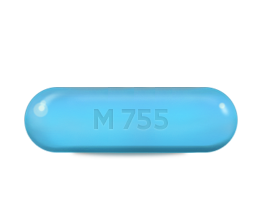

Introduction:
Allegra, renowned for its efficacy in treating allergic conditions, offers a holistic approach to symptom management. With fexofenadine hydrochloride as its active ingredient, Allegra targets symptoms associated with allergic rhinitis, urticaria (hives), and seasonal allergic rhinitis, providing enduring relief for sufferers. Let’s explore how Allegra works and its pivotal role in alleviating allergic reactions comprehensively.
Understanding Allegra’s Mechanism:
Belonging to the class of antihistamines, Allegra combats allergic responses by impeding histamine’s action, a pivotal trigger for allergic reactions. When allergens like pollen or pet dander invade the body, they instigate histamine release, resulting in distressing symptoms such as sneezing, itching, and nasal congestion. Allegra’s mechanism of action involves blocking histamine receptors, curbing its effects and alleviating associated symptoms like runny nose, itchy eyes, and skin rashes.
Allegra’s Role in Treating Allergic Rhinitis:
Allegra emerges as a frontline contender in battling allergic rhinitis, colloquially known as hay fever. Its effectiveness in managing symptoms like sneezing, nasal congestion, and itchy or watery eyes is unparalleled. By intercepting histamine receptors in nasal passages and eyes, Allegra delivers relief from discomfort, enabling individuals to breathe easier and embrace a higher quality of life.
Combatting Urticaria (Hives):
Urticaria, characterized by itchy, raised welts on the skin, finds a formidable opponent in Allegra. Triggered by diverse allergens, hives provoke distress and discomfort. Allegra steps in to mitigate itching and diminish the size and quantity of hives by inhibiting histamine receptors in the skin. Its swift action provides instant relief, enhancing the overall well-being of those grappling with urticaria.
Addressing Seasonal Allergic Rhinitis with Allegra:
Seasonal allergic rhinitis, a recurring affliction spurred by pollen during specific periods, inflicts considerable discomfort. Nasal congestion, sneezing, and an itchy throat hinder daily activities. Allegra intervenes effectively, assuaging these symptoms by blocking histamine receptors in nasal passages. Individuals reclaim their outdoor pursuits, liberated from the shackles of seasonal allergies.
The Advantage of Allegra’s Non-Drowsy Formula:
Allegra’s non-drowsy formula stands as a beacon of convenience for users. Unlike antiquated antihistamines notorious for inducing sedation, Allegra allows for uninterrupted daytime use. Its non-soporific nature ensures users remain alert and productive while experiencing relief from allergic symptoms.
Optimal Dosage and Administration:
Administered orally in tablet form, Allegra’s dosage regimen varies based on age and symptom severity. Adhering to healthcare professional’s dosage recommendations is imperative to ensure safe and efficacious utilization of the medication.
Conclusion:
In the realm of allergic condition management, Allegra emerges as a versatile and indispensable asset. Its adeptness in curbing symptoms associated with allergic rhinitis, urticaria, and seasonal allergic rhinitis signifies a paradigm shift in allergy treatment. By intercepting histamine receptors, Allegra delivers comprehensive relief, augmenting individuals’ quality of life and fostering a renewed sense of freedom from allergic afflictions. As a trusted ally in the fight against allergies, Allegra continues to uphold its legacy, empowering individuals to navigate life unhindered by allergic constraints.
